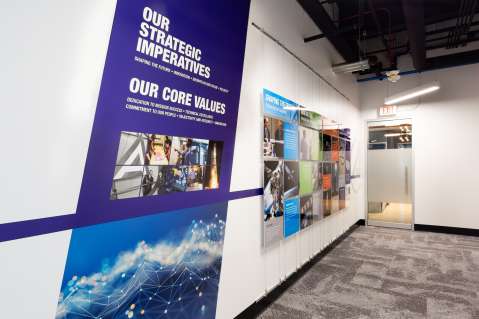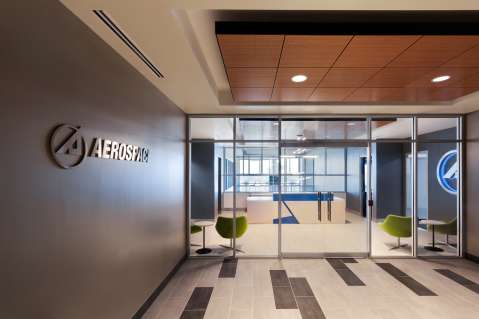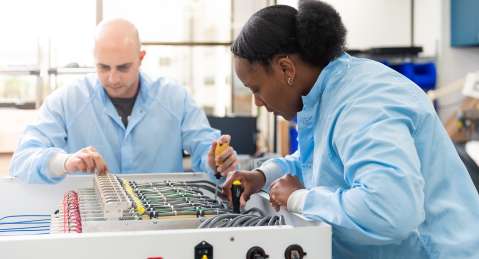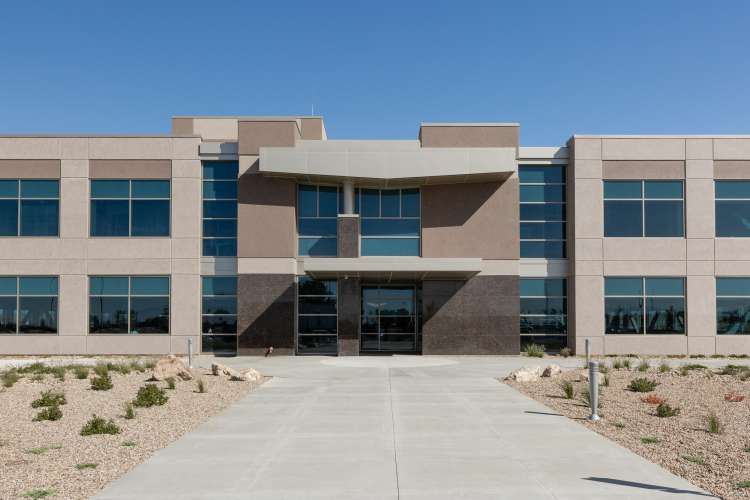
Aerospace names Tanya Pemberton as next President and CEO
The Aerospace Corporation (Aerospace), a leader in advancing national space capabilities, has selected Tanya Pemberton as its next president and CEO.

Learn More About Hill Air Force Base
Aerospace’s presence at Hill Air Force Base dates back more than 14 years. That presence was expanded with the opening of a dedicated on-base facility, housing Aerospace’s program office and technical staff. While as a corporate location, national subject matter experts support a variety of programs across the nation as part of Aerospace’s Engineering and Technology Group, the focus of the Hill AFB location is to support ICBMs.

Aviation Week: Aerospace Corp. Expands Hill AFB Facility
Jen DiMascio, Executive Editor for Aviation Week’s Defense & Space writes: The Federally Funded Research and Development Center has been involved in the nation's strategic enterprise for years. Engineers from Aerospace Corp. designed the Minuteman and current re-entry vehicles. Though Aerospace's roots date back to the Cold War, the company remains heavily involved in propulsion technologies-working with United Launch Alliance and SpaceX-that will help it provide cutting edge technical guidance.

KSLTV: Hill AFB Expansion Is Part of Updating U.S. Nuclear Defense
Matt Rascon of KSL-TV reports: The Aerospace Corporation has been working with the U.S. Air Force for more than 60 years. In 2008, they saw a need to expand to Utah with two staff members. Fourteen years later that number has grown to 38 personnel and a 24,000 square-foot office space on base that is expected to draw an additional 100 visiting engineers and scientists annually and an estimated $13 million by the end of 2023.
Why Digital Engineering Is Essential to the Future of Space
Aerospace is advancing the concepts, capabilities, and strategies that leverage an integrated digital approach, enabling opportunities to rethink what's possible when solving the hardest problems of the modern space enterprise.

Evolving with the Missile Threat: Moving Beyond Ballistic
Missiles are not just ballistic anymore, even many of the ones that are called ballistic. Aerospace's Center for Space Policy and Strategy published a paper exploring a new approach that offers a more holistic, integrated, and adaptive way of understanding this rapidly and continuously evolving ecosystem. The taxonomy has bearing on decisions for early warning, missile defense, and arms control, as well as broader strategic policy.
The Space Policy Show: The Modern Missile Threat
Missiles are often characterized using the terms ballistic, cruise, and hypersonic: ballistic missiles are treated as non-maneuvering but fast, cruise as maneuvering but slow, and hypersonic as maneuvering and fast. As discussed in their recent policy paper, Aerospace's Steve Dunham and Sam Wilson argue—with cool animations—that these labels no longer capture the missile threat and propose a new construct for considering modern missile capabilities.

Take Your Place in Space
At Aerospace, you’ll help build and protect the future of our world by solving some of the most critical problems in our universe. Join the team and take your place in space.

Aerospace Expands Its Regional Office At Hill Air Force Base
The Aerospace Corporation hosted a ribbon-cutting today for its newly expanded offices at Hill Air Force Base in Utah, where significant work is being done to support the modernization of our nation’s nuclear deterrence programs and outpace adversarial nuclear threats.



